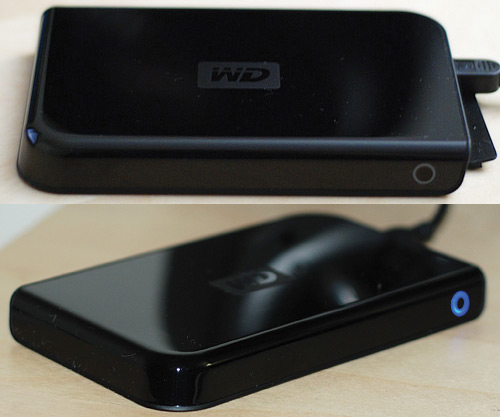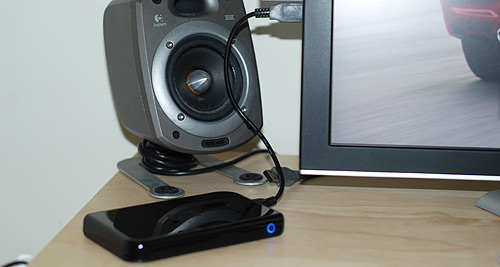Today I'll be taking a look at Western Digital's recently upgraded Passport series of portable hard drives; in particular, the 120GB bus-powered Passport. But Paul, didn't you tell us to avoid generally fragile, death-prone 2.5-inch hard drives in your back to school post? That I did. When it comes to storing your data reliably, you should definitely spring for the 3.5-inch based external hard drives if possible. My use for this Passport drive is different than that of my main backup drive in that the Passport is simply for convenient, on-the-move file transfers.

Why the WD Passport?
There are many, many competitors for the Western Digital Passport in the portable hard drive market. The most popular of which being the Maxtor OneTouch III Mini and the Seagate FreeAgent Go. For me it came down to looks and simplicity. Like the other two drives, the Passport is bus-powered meaning it gets its powered from the USB bus on your computer. However, the other two drives include a bulky USB Y-cable as older computers don't have enough juice on one USB port to power the entire drive and must be plugged into two USB ports. The computers I'll be dealing with won't have that problem so I'd rather not carry around a larger cable.
That being said, the Passport has a small USB cable. For me, that length is actually functional and ideal but others might have a problem with it. I love that I can just fold the cable once and toss it in my bag - none of the long cable hassle.
 The USB cable is just long enough to plug into my monitor's USB hub.
The USB cable is just long enough to plug into my monitor's USB hub.
When it comes down to aesthetics I side with the Passport's glossy black case (although it is a fingerprint magnet). The Passport is also smaller and lighter than the rest, making it ideal for daily toting. I can see others picking the OneTouch III Mini though, with its stronger, aluminum exterior.
Features and Performance
I didn't expect many features for this sub-100 portable hard drive and that's what I got. Okay well, if I was running Windows I could take advantage of the included "WD Sync synchronization and encryption software", but I'm not. Just plug in the drive, it will spin up and appear on your OS X desktop as a removable drive. Nothing more to it. Since I would be using the Passport with Windows computers as well as Macs, I formatted it as FAT32 (Disk Utility calls this MS-DOS file system), which has a file-size limitation of (2^32)-1 bytes. You'll most likely be using NTFS if you only plan on using the Passport on Windows machines.
The USB 2.0 Passport offers decent performance but it's nothing to write home about. When thinking about the Passport in terms of 2.5-inch hard drives, the performance I experienced was about average. I tested it out by transferring a 900MB VOB file from the Passport to my MacBook Pro and back again. Keep in mind though, this transfer is from one 5400RPM 2.5-inch hard drive to another, so either could be a bottleneck. Ideally, I should have transfered files to and from the Passport when I was back at home with my PC and its 10,000RPM WD Raptor hard drive to eliminate such variables in testing.

 Top: Transfer from Passport » MBP. Bottom: MBP » Passport. Both times were similar.
Top: Transfer from Passport » MBP. Bottom: MBP » Passport. Both times were similar.
Thoughts
Regardless of the performance results, I didn't buy this drive for speed, just convenience. I work on campus as a web developer and often need to access large files on the school's intranet, which I can't access via VPN from my place. Now I can just bring the Passport along.
Again, I must stress that the Western Digital Passport is great for transferring files here and there but even I wouldn't trust it with mission critical data - you shouldn't either. Keep your important stuff on a desktop-standard 3.5-inch hard drive, a RAID 1 setup if it's even more important, Amazon S3 if you'd be heartbroken if you lost your data, or an SLA-wielding commercial CDN (Akamai/Level 3/Limelight) in addition to rsynced local and colocated RAID 5+1 setups of your own and then some if you'd die without your data.
The Western Digital Passport comes in 60GB, 80GB, 120GB, 160GB and 250GB flavors.